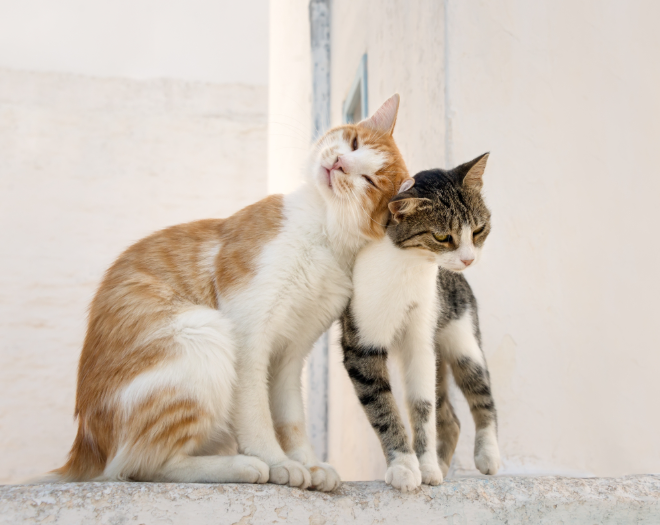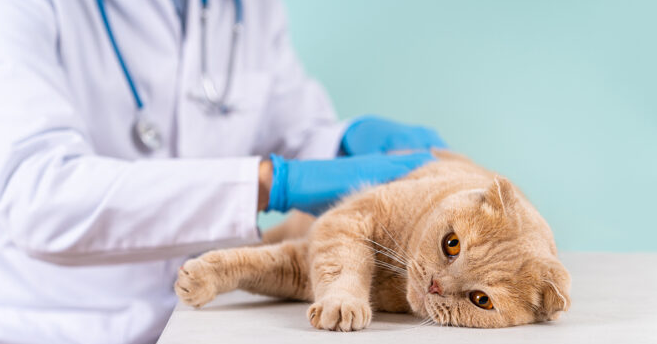
Cats are not just pets – but they are our companions and part of the family. They fill our homes with charm, love, and warmth. However, even though we wish they could live forever, the heartbreaking day comes when we must prepare to say our goodbyes.
Watching a beloved cat grow old or sick is among the most difficult things a pet owner can experience. Cats are masters at hiding their pain; therefore, it can be hard to detect when they are beginning to approach the end of their lives.
If you can recognize the signs that your cat is not doing well, give it the care and love it deserves in its final days. In the guide today, we’ll go over both the obvious and more unexpected signs that a cat is nearing the end of its life – and what you can do to give it the most peaceful farewell possible.
1. Hide-and-seek
Cats have always been well known for their independence, and this is true even when they are not feeling well. As natural predators – but also prey – cats have instinctive behaviors that stem from their wild state. As a cat becomes sick or dying, it will often retreat and seek out secluded places. This is a defense mechanism in order to protect itself from potential predators and dangers.
Even domesticated house cats still have this instinct. Many cat owners find that their cat suddenly becomes more withdrawn or hides in cupboards, under furniture, or in other hidden places when it is not feeling well. This can be a natural response to pain or weakness, but it can also be a sign that it is nearing the end of its life.
2. Reduced appetite and thirst
One clear indication that a cat is nearing the end of its life is a noticeable decrease in appetite and thirst. Dying cats will often stop eating and drinking completely.
While this can be a painful experience for owners to witness, it is a natural part of the body’s way of preparing for the final stage of life.

3. More resting and sleeping
Your cat’s personality may begin to change. Some cats will change their activity level and may become weaker and less active.
A sign may also be that they spend more time resting or sleeping.
4. Breathing patterns change
As a cat is seriously ill or nearing the end of its life, its breathing may be noticeably altered.
Certain cats start to breathe more shallowly, while others may develop a more irregular breathing rhythm. This is often due to the body weakening and organs starting to function more slowly.
data-cptid=”1539520_timelesslife.info_300x250_Carpet”>
5. Losing interest in their surroundings
The cat may become apathetic and less interested in the surroundings and people around it.
An otherwise social and playful cat may begin to withdraw, show less response to familiar voices or touch, and generally seem distant.
6. Coat becomes dull and woolly
This is a clear sign. The coat, which was previously smooth and well-groomed, may become dull, woolly and uneven.
This may be due to the fact that the cat no longer has the energy or energy to groom itself as thoroughly as before.
7. Problems with movement and balance
As cats get older or sick, they may experience problems with movement and balance.
Illness and general weakness can make it challenging for your cat to jump up to their favorite spot, climb, or even walk short distances.
8. Behavioral changes

Some cats become more reserved and withdrawn. Meanwhile, other cats may become more contact-seeking and dependent on their owner’s proximity.
They may spend more time on your lap, follow you around, or seek comfort through cuddles and touch. This increased attachment may be a cat’s way of seeking reassurance when they feel vulnerable.
9. Nausea or vomiting
When a cat nears the end of its life, it may experience digestive problems such as nausea and vomiting.
Some cats may show signs of discomfort by swallowing repeatedly, drooling more than usual, or avoiding food and water altogether.
10. Digestive problems
The digestive system may begin to malfunction, which can cause either diarrhea or constipation.
Whether your cat is suffering from constipation or diarrhea , it’s important to focus on comfort and well-being. Ensure your cat has access to clean water, a quiet environment, and a place where they feel safe.
11. Changes in body temperature
Depending on the cat’s health, it can have both a low temperature and a high fever. The cat’s temperature should be between 38 and 39.3 degrees.
Consult a veterinarian
As an owner, seeing your cat during this phase can be difficult, but the most important thing is to provide them with security and comfort. Make sure your cat has a quiet and comfortable place to rest, and be there for them when they need it.
If you are not sure whether your cat is in pain or needs relief, it may be a good idea to consult a veterinarian. Understanding what is happening in your cat’s final stages of life can make it easier to give them the care and love they deserve.
If your cat shows any of these signs, it’s better to contact a veterinarian as soon as possible. Your pet’s comfort and well-being should always come first.
